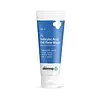What's inside
What's inside
 Key Ingredients
Key Ingredients

 Benefits
Benefits

 Concerns
Concerns

 Ingredients Side-by-side
Ingredients Side-by-side

Water
Skin ConditioningSodium C16 Olefin Sulfonate
EmulsifyingCocamidopropyl Betaine
CleansingGlycerin
HumectantCocamide Mea
EmulsifyingSodium Lactate
BufferingSalicylic Acid
MaskingSalix Alba Bark Extract
AstringentHamamelis Virginiana Extract
AntiseborrhoeicCoco-Glucoside
CleansingGlyceryl Oleate
EmollientPEG-120 Methyl Glucose Dioleate
EmulsifyingSodium Chloride
MaskingPhenoxyethanol
PreservativeTriethylene Glycol
MaskingDisodium EDTA
Water, Sodium C16 Olefin Sulfonate, Cocamidopropyl Betaine, Glycerin, Cocamide Mea, Sodium Lactate, Salicylic Acid, Salix Alba Bark Extract, Hamamelis Virginiana Extract, Coco-Glucoside, Glyceryl Oleate, PEG-120 Methyl Glucose Dioleate, Sodium Chloride, Phenoxyethanol, Triethylene Glycol, Disodium EDTA
Water
Skin ConditioningCoco-Glucoside
CleansingAcrylates Crosspolymer
AbsorbentSodium Cocoyl Glutamate
CleansingGlycerin
HumectantCocamidopropyl Betaine
CleansingSodium Lactate
BufferingAloe Barbadensis Leaf Extract
EmollientPropylene Glycol
HumectantSalicylic Acid 2%
MaskingCamellia Sinensis Leaf Extract
AntimicrobialLactic Acid
BufferingGlycolic Acid
BufferingHydrogenated Castor Oil
EmollientMelaleuca Alternifolia Leaf Oil
AntioxidantChamomilla Vulgaris Extract
Skin ProtectingXanthan Gum
EmulsifyingPhenoxyethanol
PreservativeEthylhexylglycerin
Skin ConditioningWater, Coco-Glucoside, Acrylates Crosspolymer, Sodium Cocoyl Glutamate, Glycerin, Cocamidopropyl Betaine, Sodium Lactate, Aloe Barbadensis Leaf Extract, Propylene Glycol, Salicylic Acid 2%, Camellia Sinensis Leaf Extract, Lactic Acid, Glycolic Acid, Hydrogenated Castor Oil, Melaleuca Alternifolia Leaf Oil, Chamomilla Vulgaris Extract, Xanthan Gum, Phenoxyethanol, Ethylhexylglycerin
Ingredients Explained
These ingredients are found in both products.
Ingredients higher up in an ingredient list are typically present in a larger amount.
Cocamidopropyl Betaine is a fatty acid created by mixing similar compounds in coconut oil and dimethylaminopropylamine, a compound with two amino groups.
This ingredient is a surfactant and cleanser. It helps gather the dirt, pollutants, and other impurities in your skin to be washed away. It also helps thicken a product and make the texture more creamy.
Being created from coconut oil means Cocamidopropyl Betaine is hydrating for the skin.
While Cocamidopropyl Betaine was believed to be an allergen, a study from 2012 disproved this. It found two compounds in unpure Cocamidopropyl Betaine to be the irritants: aminoamide and 3-dimethylaminopropylamine. High-grade and pure Cocamidopropyl Betaine did not induce allergic reactions during this study.
Learn more about Cocamidopropyl BetaineCoco-Glucoside is a surfactant, or a cleansing ingredient. It is made from glucose and coconut oil.
Surfactants help gather dirt, oil, and other pollutants from your skin to be rinsed away.
This ingredient is considered gentle and non-comedogenic. However, it may still be irritating for some.
Learn more about Coco-GlucosideGlycerin is already naturally found in your skin. It helps moisturize and protect your skin.
A study from 2016 found glycerin to be more effective as a humectant than AHAs and hyaluronic acid.
As a humectant, it helps the skin stay hydrated by pulling moisture to your skin. The low molecular weight of glycerin allows it to pull moisture into the deeper layers of your skin.
Hydrated skin improves your skin barrier; Your skin barrier helps protect against irritants and bacteria.
Glycerin has also been found to have antimicrobial and antiviral properties. Due to these properties, glycerin is often used in wound and burn treatments.
In cosmetics, glycerin is usually derived from plants such as soybean or palm. However, it can also be sourced from animals, such as tallow or animal fat.
This ingredient is organic, colorless, odorless, and non-toxic.
Glycerin is the name for this ingredient in American English. British English uses Glycerol/Glycerine.
Learn more about GlycerinPhenoxyethanol is a preservative that has germicide, antimicrobial, and aromatic properties. Studies show that phenoxyethanol can prevent microbial growth. By itself, it has a scent that is similar to that of a rose.
It's often used in formulations along with Caprylyl Glycol to preserve the shelf life of products.
Salicylic Acid (also known as beta hydroxy acid or BHA) is a well-known ingredient for treating skin that struggles with acne and clogged pores. It exfoliates both the skin's surface and deep within the pores to help clear out buildup, control oil, and reduce inflammation.
Unlike AHAs (alpha hydroxy acids), salicylic acid is oil-soluble. This allows it to penetrate into pores which makes it especially effective for treating blackheads and preventing future breakouts.
Salicylic acid is also known for its soothing properties. It has a similar structure to aspirin and can calm inflamed or irritated skin, making it a good option for acne-prone skin that is also sensitive.
Concentrations of 0.5-2% are recognized by the U.S. FDA as an over-the-counter topical acne product.
It can cause irritation and/or dryness if one's skin already has a compromised moisture barrier, so it's best to focus on repairing that before introducing this ingredient into your routine.
While salicylic acid does not increase sun sensitivity, it’s still important to wear sunscreen daily to protect your skin.
If you are looking for the ingredient called BHA or Butylated Hydroxyanisole, click here.
Learn more about Salicylic AcidSodium Lactate is the sodium salt of lactic acid, an AHA. It is a humectant and sometimes used to adjust the pH of a product.
This ingredient is part of our skin's NMF, or natural moisturizing factor. Our NMF is essential for the hydration of our top skin layers and plasticity of skin. NMF also influences our skin's natural acid mantle and pH, which protects our skin from harmful bacteria.
High percentages of Sodium Lactate can have an exfoliating effect.
Fun fact: Sodium Lactate is produced from fermented sugar.
Learn more about Sodium LactateWater. It's the most common cosmetic ingredient of all. You'll usually see it at the top of ingredient lists, meaning that it makes up the largest part of the product.
So why is it so popular? Water most often acts as a solvent - this means that it helps dissolve other ingredients into the formulation.
You'll also recognize water as that liquid we all need to stay alive. If you see this, drink a glass of water. Stay hydrated!
Learn more about Water